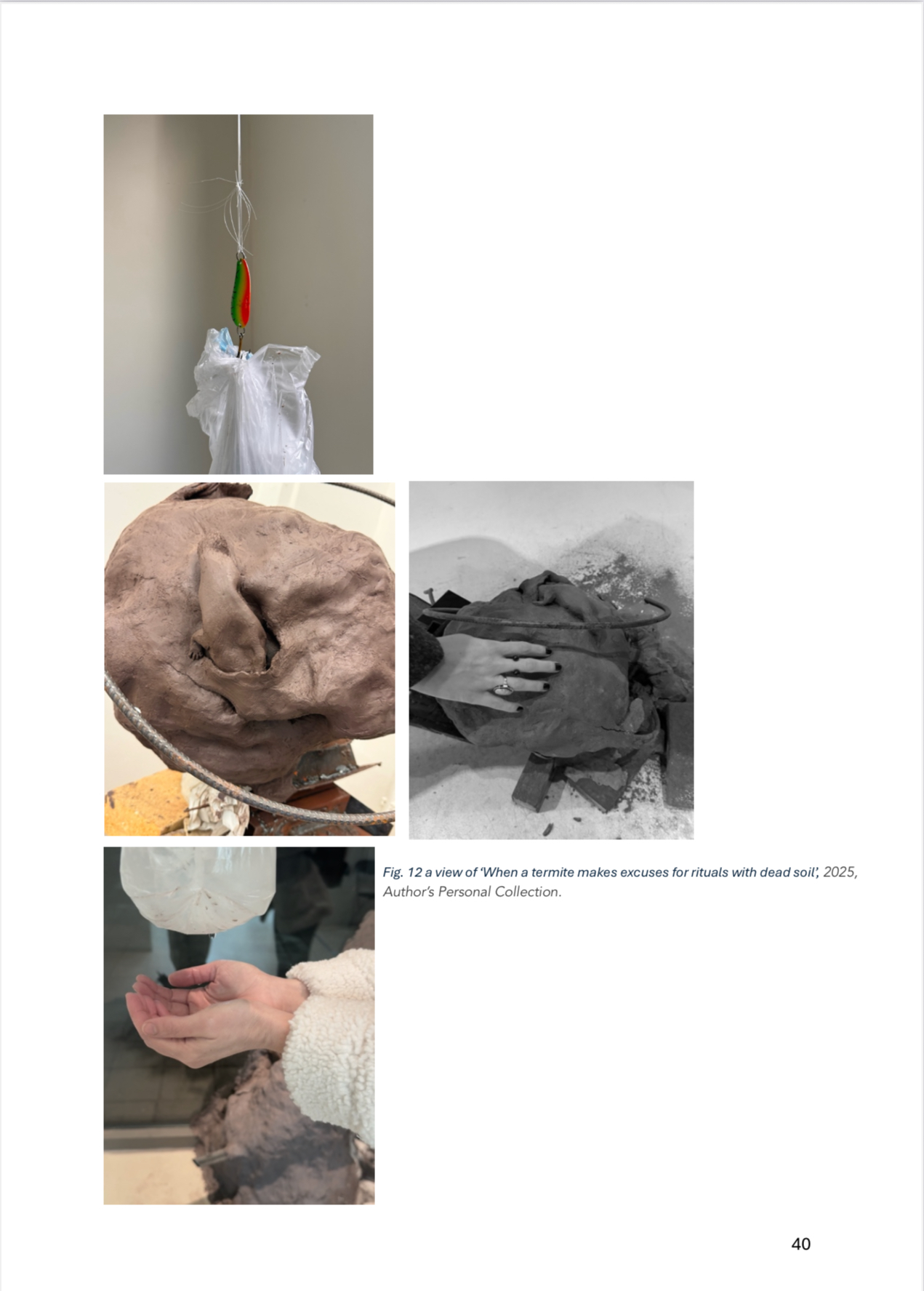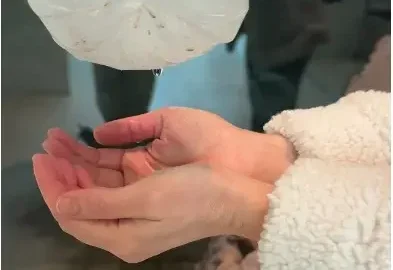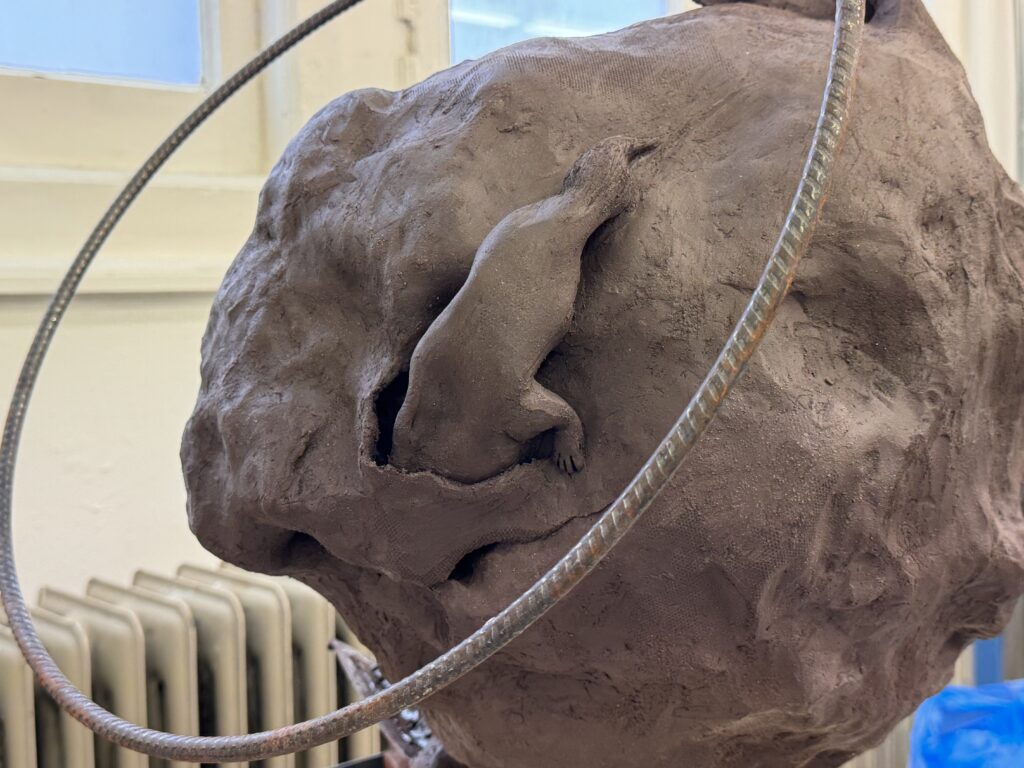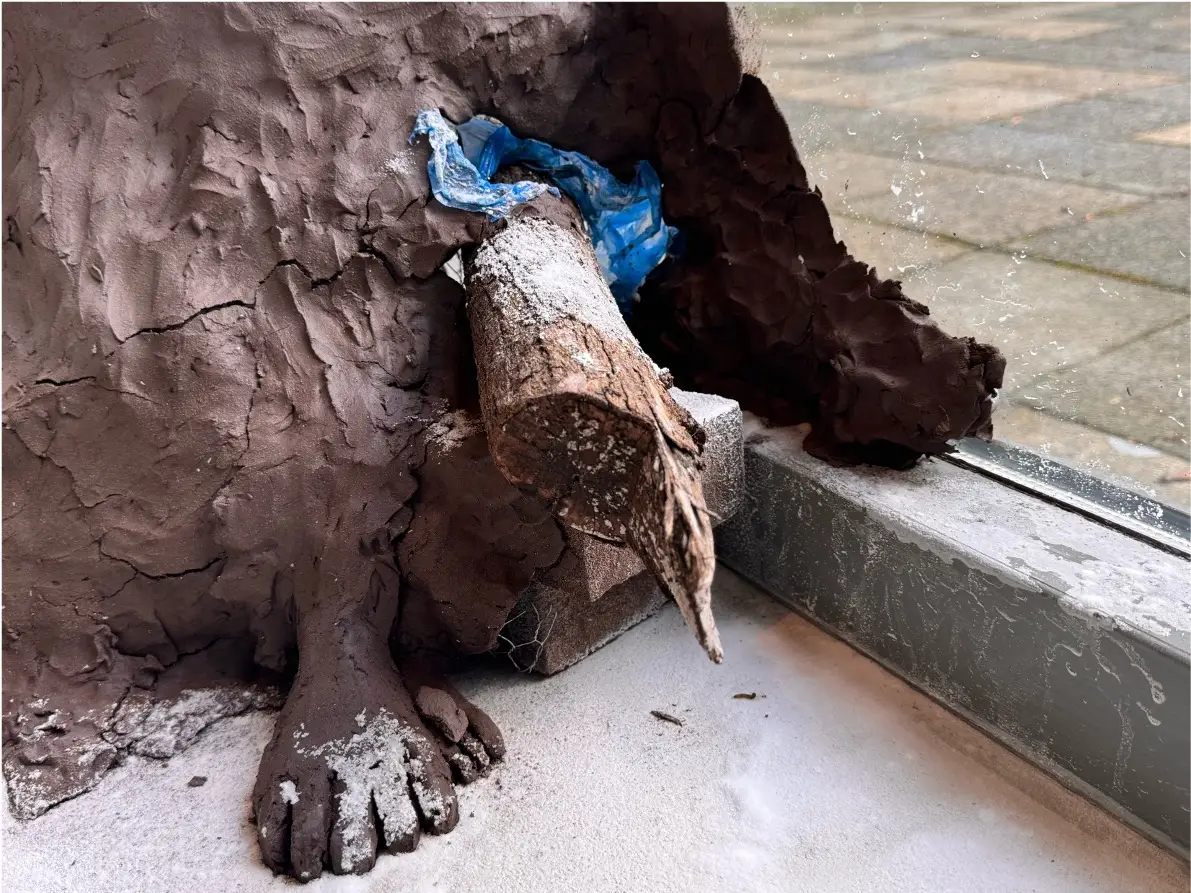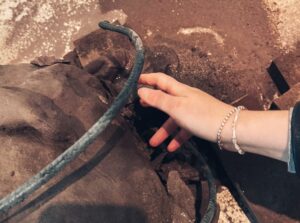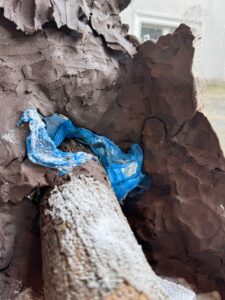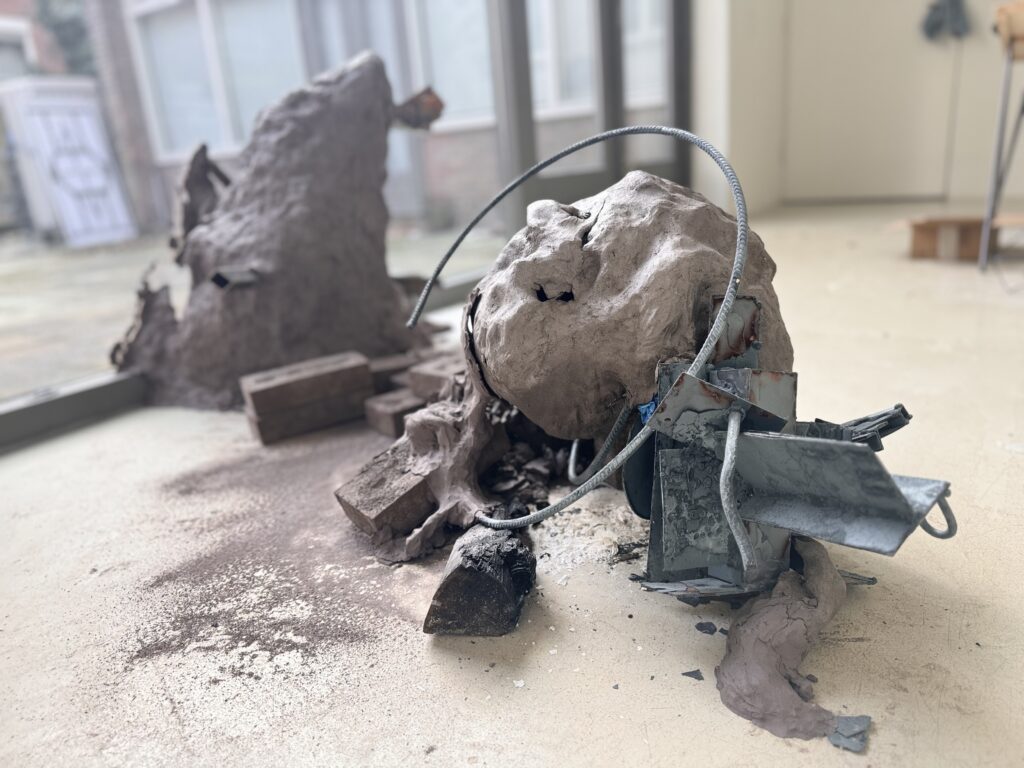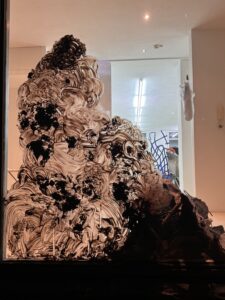“When a termite makes excuses for rituals with dead soil”
A performative installation and de-installation is process of re-assmble :Ceramic, soil, clay, waste plastic & metal, Salt, water, fishing hook
This research is about nurturing a space through mundane negotiations, refusing by creative layering and re-assembling from political clichés is a process that breaks down dichotomies at a fundamental level.”
Learning Through Engaging: For a moment, let us sense the journey of a termite. What happens when a termite enters new territory and becomes part of a transformation? The termite makes excuses to engage in rituals with dead soil, building a mound where the land holds only limited soil (netherlands). To resist the possibility of extracting communal knowledge, she opens a ritual space with what already exists — a space that transmutes diverse substances, breaks dichotomies, and celebrates a mélange of diverse bodies.
Here, the kiln is the ritual space akin to an alchemy chamber or a sacred space. Fire, as a purifying force of the ritual which encourages the fluid exchanges of different particles. It allows both materials to accept each other’s presence and allow the otherness. For the termite, fire is a metaphor for liquidity that allows each opposite element to lose their conservative qualities. In this fertile liquid space, they get a chance to make a conversation in certain extreme conditions and embrace the new forms and qualities.
Through the ritual, pieces of waste metal collected from trash meet the expensive clay from a fancy store. These waste metals are the complex experienced bodies holding wounds and stories. They meet clay, an organic-earthy material that she found stored in human shops in a curated land (Netherlands). However, within the kiln, these two materials hold the tension, yet, flow in harmony of otherness. This slow negotiation and meditative process fertilizes the time and embodies the space of transmutation. Through ritual, the termite opens her metamorphosis journey by embracing diversity and facilitating a space for an embodied experience through materiality. She grapples with her role and the ethics of extracting her own communal knowledge. Instead, she considers facilitating a rituals that nurture her ancestors’ knowledge within her practice without extracting communal knowledge as mere resource.
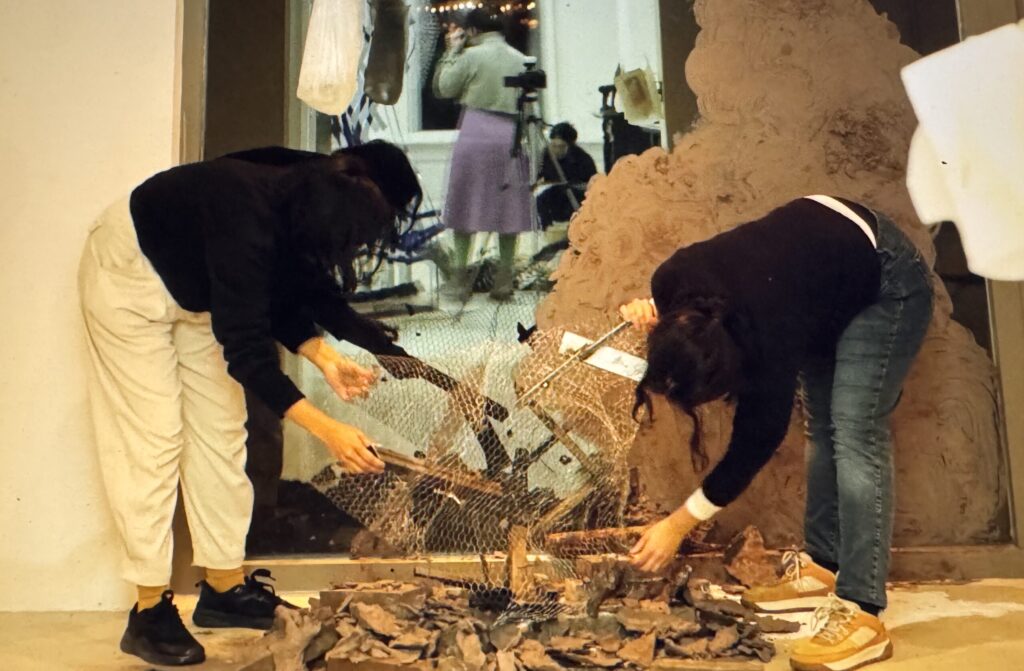
De-installation ceremoney with artist Zoya Sardashti
COLORLESS GREN IDEAS SLEEP FURIOUSLY, 2024
Paradise, West Den Haag, Netherlands
